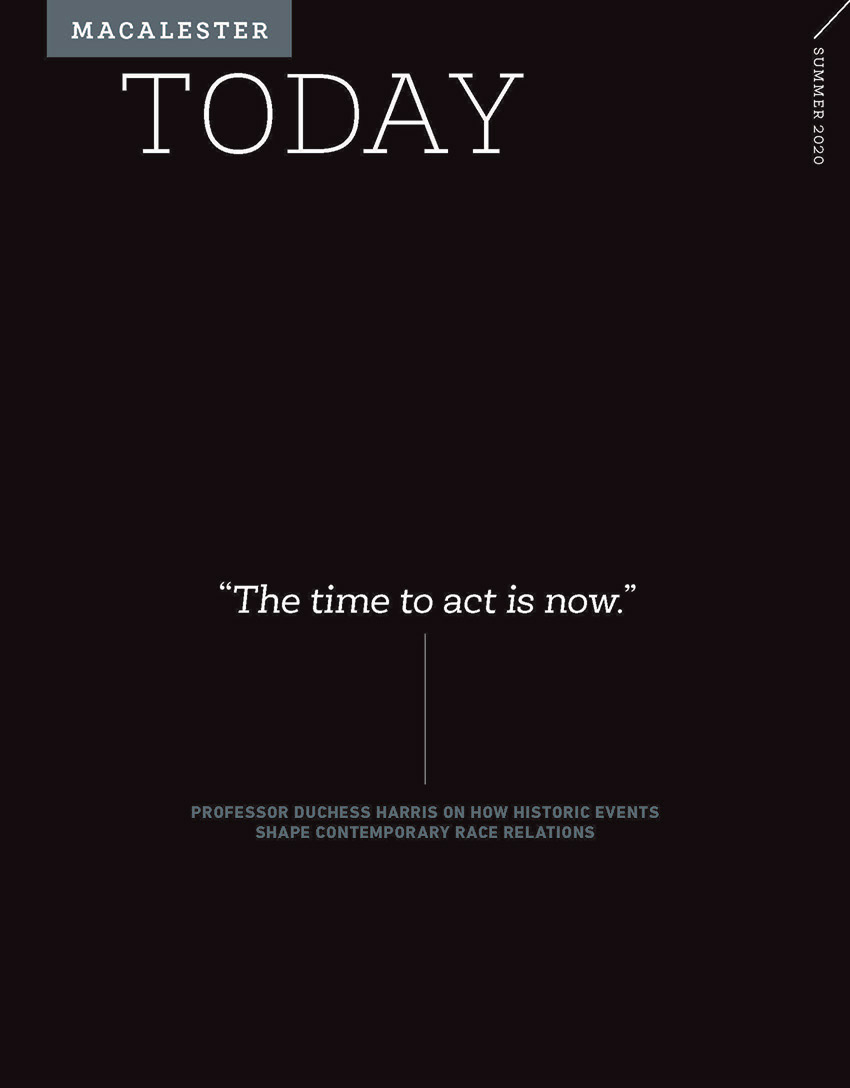
Eight years ago, James Colliander ’89 was staring at a stack of more than 84,000 pages waiting to be graded. He and his team of volunteers from the University of Toronto—where he was working at the time as a math professor—were tasked with determining the winner of the Canadian Open Mathematics Challenge, an annual competition that more than 5,300 high-school students had entered. Colliander started calculating how many hours it would take for the team to grade the exams by hand. “I saw the bottleneck that we were facing,” he says.
But the pile of papers gave him an idea. Grading needed to be overhauled for the digital era. Within a year, Colliander founded Crowdmark, a software company allowing post-secondary students to submit papers and tests digitally via images. Educators can mark those same papers online and the software sends alerts to students’ mobile devices when grades are ready.
“Providing feedback quickly is great for not just students but also educators, so they have time to tackle other responsibilities,” says Colliander, who’s a living example: he helps run the Toronto-headquartered company, while also serving as a math professor at the University of British Columbia (UBC).
Crowdmark’s software works by allowing students to scan exams or homework assignments into the platform. Then a professor or teaching assistant grades the work online using tools such as annotations, marks, or feedback from a comment library. “Imagine hundreds of 10-page exams in front of you—with your red pen, you’d often write the same margin comment on many of the responses for question seven,” Colliander says. “With Crowdmark, you can use digital methods like cut and paste that save a huge amount of time.”
And the software would have streamlined grading those 84,000 pages at that math challenge. Multiple-choice bubble sheets are graded automatically, and scores are calculated and then exported. Unlike other online-grading software that requires human handling of scanning pages, for example, Crowdmark offers a unique paper-to-digital workflow: Exams are printed with unique QR codes on every page, which “allows for robust routing of scanned page images to the appropriate place in the database,” Colliander explains.
To date, more than 50 million pages at post-secondary institutions around the world have been graded on the company’s software.
For Colliander, launching a startup offers a different kind of satisfaction than his academic career. “It’s exciting to come up with a technology that has touched so many people,” he says.
Tech has fascinated Colliander from his childhood days in Texas and Minnesota. His father enjoyed building drag racing cars and taught Colliander how to make and repair them. His passion for math developed in high school, and specializing in math and physics at Macalester felt like a natural progression of his interests, he says. On what he values most about his time at Macalester, Colliander quickly replies with a laugh, “Meeting my wife, of course.”
Beyond meeting and eventually marrying sociologist Jennifer Berdahl ’89, with whom he has two daughters, Colliander credits Macalester for challenging him intellectually. “I was able to have long discussions with distinguished professors and think through ideas we both found interesting,” he says.
During college, he also worked as a research associate at 3M, focusing mainly on optics technology and engineering projects. Then Colliander set his sights on the U.S. Navy, spending 18 months at the USA Naval Research Lab in Washington, D.C., to develop fiber optic sensors for anti-sub warfare weaponry. “But it was around that time I realized I wanted to work more in math than physics and engineering,” he says.
He followed that interest to the University of Illinois at Urbana, Champaign, where he earned a PhD in math and realized he’d found his calling. “I see mathematicians as lawyers of the universe,” Colliander says. “We identify the rules and argue about them while developing them, and we don’t argue about them once we find the proof to settle the conflict.”
Colliander taught at the University of California, Berkeley, and the University of Toronto, where he founded Crowdmark in 2012. He then moved to Vancouver in 2015 to teach at UBC.
Running a startup, teaching math, and making time for family can feel overwhelming at times, Colliander says, which is why he appointed former Crowdmark chief marketing officer Michelle Caers to take over as the company’s CEO several years ago. Colliander realized it was time to fine-tune his work-life balance.
“Sometimes I felt very stretched,” he says, “I still devote a lot of time to my career, and I’m trying to make sure that I don’t miss out on things, like going rock-climbing with my daughter.”
And as he and his colleagues develop a game plan for Crowdmark’s future, Colliander sees Crowdmark replacing the ubiquitous red pen: “My goal is for Crowdmark to allow for enriched interactions, leading to significant improvements in learning across the entire education system.”
By David Silverberg / Photo by Kyrani Kanavaros
David Silverberg is a freelance writer based in Toronto.
August 18 2020
Back to top





